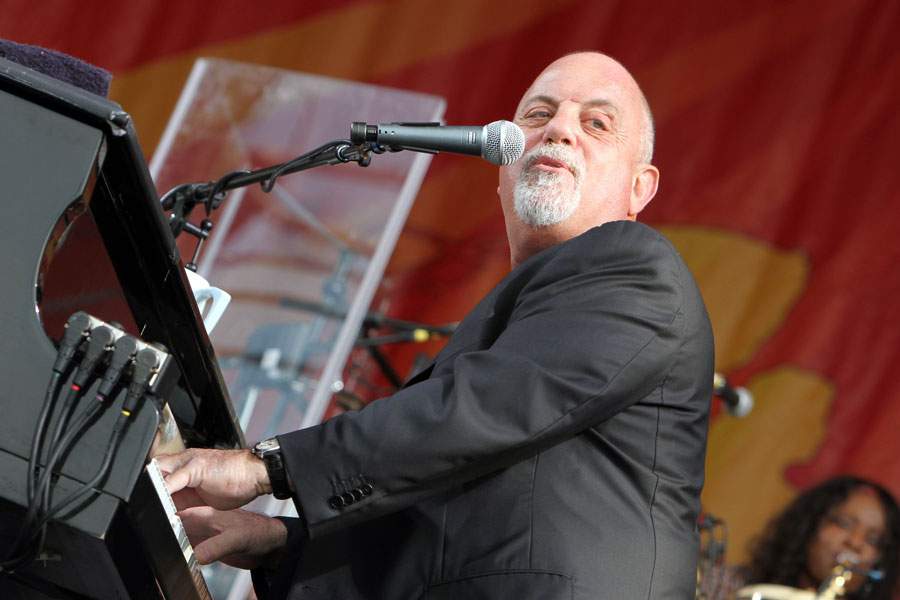Billy Joel, Long Island’s Own “Piano Man,” Diagnosed with Brain Disorder; Cancels All Tour Dates for Treatment

LONG ISLAND, NY – Billy Joel, the music legend who grew up in Hicksville and has long called Oyster Bay home, has been diagnosed with normal pressure hydrocephalus (NPH), a neurological condition caused by a buildup of cerebrospinal fluid in the brain’s ventricles. The disorder, which can impair walking, thinking, and bladder control, was identified in May 2025, prompting the 75-year-old Long Island icon to cancel all upcoming performances to focus on his health.
The announcement came on May 23, when Joel’s team confirmed that recent symptoms—including problems with balance, hearing, and vision – had intensified after a series of concerts. Medical specialists advised immediate intervention, including physical therapy, to prevent the condition from worsening. NPH is sometimes treatable with surgical procedures such as a shunt to drain excess fluid, though Joel has not disclosed whether surgery is planned.
Joel’s diagnosis came just days before the Tribeca Film Festival premiere of Billy Joel: And So It Goes, a career-spanning documentary about his life and music. Unable to attend due to his health, the artist has since provided updates through interviews and appearances, saying he feels relatively well but continues to experience balance issues, which he compared to the sensation of being on a moving boat.
Normal pressure hydrocephalus is often mistaken for other neurological conditions because its symptoms can resemble those of Parkinson’s disease or Alzheimer’s. Without treatment, NPH can lead to significant cognitive and physical decline, but early detection increases the chances of improvement.
Joel’s decades-long career – marked by chart-topping hits such as Piano Man, New York State of Mind, and Scenes from an Italian Restaurant – has made him one of the best-selling artists in history. For Long Islanders, his music is more than just entertainment; it’s part of the cultural fabric. From his early days performing in local bands to his ongoing support for area charities and venues, Joel’s presence on the Island has been constant.
While his immediate focus is on recovery, fans from across Long Island and beyond are hopeful he will return to the stage when he is medically cleared. In the meantime, he remains a beloved figure at home, where his story and his songs continue to inspire.
Billy Joel’s Long Island Timeline
1949 – Born William Martin Joel in the Bronx, later moving with his family to Hicksville, Nassau County.
1960s – Attends Hicksville High School, playing in local bands such as The Echoes, The Hassles, and Attila.
1971 – Signs his first solo record deal; begins building his career while living on Long Island.
1977 – Releases The Stranger, featuring “Scenes from an Italian Restaurant,” which references iconic New York imagery. By now, Joel is a well-known Long Island resident.
1980s–1990s – Becomes a fixture at local charity events and concerts, supporting causes including Long Island Cares, the Harry Chapin Food Bank, and local music education programs.
2000s – Continues to live on the North Shore in Oyster Bay, with his motorcycle shop, 20th Century Cycles, becoming a local landmark in Oyster Bay Village.
2010s – Performs multiple sold-out concerts at Madison Square Garden, often drawing large numbers of Long Island fans.
2020s – Maintains an active connection to Long Island life while touring nationally; in 2025, his diagnosis with normal pressure hydrocephalus leads him to pause performing.
Q&A: Understanding Normal Pressure Hydrocephalus (NPH)
Q: What is normal pressure hydrocephalus?
A: NPH is a neurological condition where excess cerebrospinal fluid builds up in the brain’s ventricles, causing them to enlarge. This pressure can disrupt brain function, especially in areas controlling movement, thinking, and bladder control.
Q: Why is it called “normal pressure”?
A: Despite the extra fluid, the pressure readings in the brain often appear within a normal range, which is why the condition can be difficult to diagnose.
Q: What are the main symptoms?
A: The classic symptom “triad” includes difficulty walking (often described as shuffling or unsteady steps), memory or thinking problems, and loss of bladder control. Not all patients have all three symptoms.
Q: How is NPH diagnosed?
A: Doctors use brain imaging, such as MRI or CT scans, to detect enlarged ventricles. They may also perform neurological exams and specialized spinal fluid tests to confirm the diagnosis.
Q: How is NPH treated?
A: The most common treatment is surgical placement of a shunt — a small tube that drains excess fluid from the brain to another part of the body, usually the abdomen, where it can be absorbed. Physical therapy can also help improve balance and mobility.
Q: Is NPH curable?
A: While not always “curable,” many people improve significantly after treatment. Early diagnosis increases the chance of recovery or symptom reduction.
Q: How common is NPH?
A: It’s more frequently diagnosed in adults over 60, but experts believe it’s underdiagnosed because its symptoms can mimic Alzheimer’s disease, Parkinson’s disease, or normal aging.


